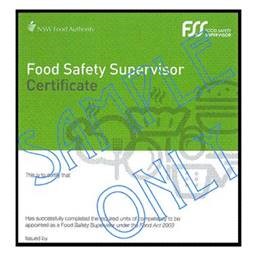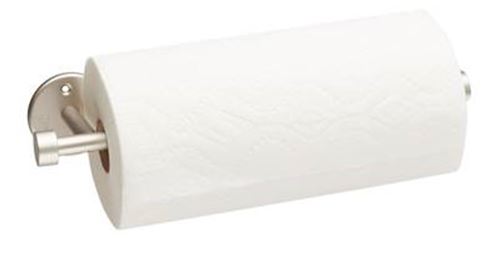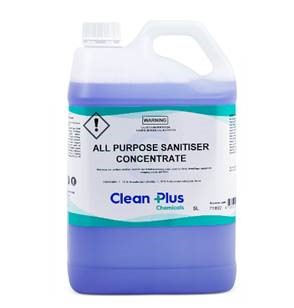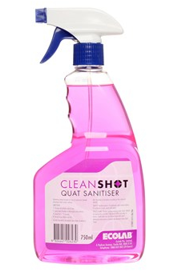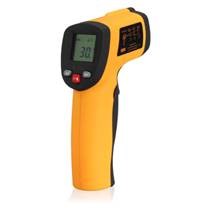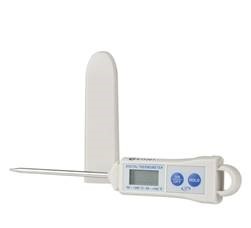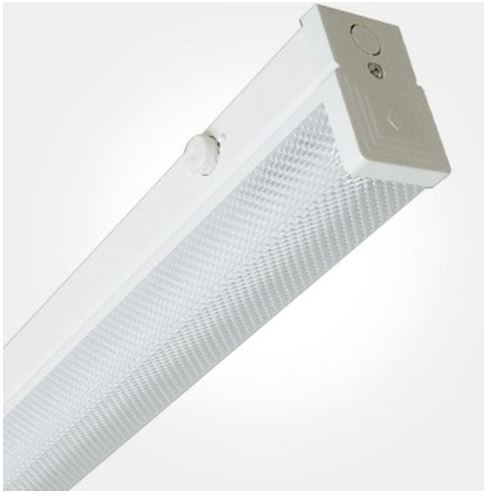Information
-
Application Number (FD)
-
Food Business Name
-
Conducted on
-
Prepared by
- Jacob Helson
- Simone Sheppard
- Adrian Smith
- Greg ODonnell
- Greg Porter
-
Location
Food Premise Information
-
Proprietor / Company Name
-
Address of Proprietor ( Registered Office of Company OR Home address of Individual)
-
ABN/ACN
-
Email
-
Person Interviewed
-
Phone Number
-
Food Safety Supervisor
-
The Food Business is required to appoint at least one Food Safety Supervisor. See http://www.foodauthority.nsw.gov.au/rp/fss-food-safety-supervisors for further details.
-
-
Is the FSS Certificate valid?
-
A recent inspection of your food premise revealed that the Food Safety Supervisor FSS Certificate appointed for your premise has expired.
-
Food Safety Supervisor Certificates expire 5 years from the date of issue.
-
You must take immediate steps to enroll in a recertification course and arrange for a new certificate to be issued by NSW Food Authority.
-
Provide a copy of this certificate to records@shellharbour.nsw.gov.au
-
For more information see http://www.foodauthority.nsw.gov.au/rp/fss-food-safety-supervisors
-
Food Safety Supervisor Certificate Number
-
Food Safety Supervisor Certificate
-
Number of Food Handlers
General Requirements
-
1. Food business has notified details to Council www.shellharbour.nsw.gov.au. FSC 3.2.2 clause 4 score 1
-
2. Food Safety Supervisor is appointed and FSS certificate is on the premises, Food Act 2003 s.106. Score 1
-
3. Food handlers have skills and knowledge to handle food safely. FSC 3.2.2 clause 3. Score 1 or 4
-
4. No handling or sale of unsafe or unsuitable food e.g. food that is damaged, deteriorated or perished; no use of cracked or dirty eggs or food past use by date. Food Act sections 16 & 17. Score 4
Food Handling Controls FSS 3.2.2
-
5. Food protected from the possibility of contamination; food receipt, storage, preparation, display and transport. Clauses 5(1), 6(1), 7(1)(b)(I), 8(1)(4), and 10(a). Score 1, 4 or 8
-
6. Names and addresses are available for manufacturer, supplier or importer of food. Clause 5(2). Score 1
-
7. Potentially hazardous food (PHF) is under temperature control: food receipt, storage, display and transport; less than 5 degrees, above 60 degrees Celsius . Frozen food is hard frozen . Clauses 5(3), 6(2), 8(5), and 10(b). Score 1, 4 or 8
-
Potentially Hazardous Foods
-
Potentially hazardous foods must be kept under temperature control. Potentially Hazardous foods are foods that might contain food poisoning bacteria and are capable of supporting growth of these bacteria or formation of toxins to levels that are unsafe for consumers if the foods are not stored at correct temperatures. Toxins are poisonous chemicals produced by some types of bacteria.
-
The following are examples of potentially hazardous foods:
-
* raw and cooked meat or foods containing meat such as casseroles, curries and lasagna,
-
* dairy products, ie. milk, custard and dairy based desserts,
-
* seafood (excluding live seafood),
-
* processed fruits and vegetables ie. salads,
-
* cooked rice and pasta,
-
* foods containing eggs, beans, nuts or other protein rich foods such as quiche and soy products,
-
* foods that contain these foods such as sandwiches and rolls.
-
Ideally the food stored in the display cabinets will keep the food below 5 degree C or above 60 degree C. To do this it is important to ensure that the food is below 5 degree C or above 60 degree C before it is put in the display and to ensure that any food put into the cold display is at 5 degree C or below before it is placed in the cold display.
-
8. Processing of foods; take all practicable measures to process only safe and suitable foods. Prevent likelihood of contamination, use process steps if necessary. Clause 7(1). Score 4 or 8
-
9. Cooked PHF is cooled rapidly, ( 2 - 4 hour rule), items thawed correctly, processed quickly. Clauses 7(2) & (3). Score 4 or 8
-
10. Reheating of PHF is rapid - use of oven, stove top, or microwave. But not in Bain-marie. Clause 7(4). Score 8
-
11. Self serve food bar is supervised, has separate utensils and sneeze guard. Clause 8(2). Score 1
-
12. Food wraps and containers will not cause contamination. Clause 9. Score 1
-
13. Food for disposal is separated from normal stock. Clause 11. Score 1
Health and Hygiene FSS 3.2.2
-
14. Food handlers wash and dry hands thoroughly using hand wash facilities. Clause 15(4). Score 4
-
15. Food handlers avoid unnecessary contact with ready to eat food or food contact surfaces by use of utensils, a gloved hand, food wraps etc. Clauses 15(1)(b) & 18(3)(b). Score 1
-
Food Handling
-
A food handler was observed touching ready-to-eat food with their bare hands. A food handler must, when engaging in any food handling operation take all practicable measures to prevent unnecessary contact with ready-to-eat food.
-
Practicable measures to prevent contact
-
Practicable measures food handlers can take to prevent unnecessary contact with ready-to-eat food include:
-
* Using tongs or other implements to handle the food.
-
* Using gloves, provided the gloves are changed if they become contaminated.
-
* Using other barriers, such as paper, in contact with the food.
-
16. Food handlers do not spit or smoke in food handling areas or eat, sneeze, cough or blow over exposed food or food contact surfaces. Clauses 15(1) (e) - (g), 18(3)(c). Score 4
-
17. Food handlers take all practicable measures not to contaminate food or food contact surfaces have clean clothing, waterproof covering on bandages. Clauses 15(1)(a)(c) & 18(3). Score 8
-
18. Food handlers wash hands before commencing/recommencing work and after: using the toilet, coughing, sneezing, smoking, handling raw mead, cleaning, etc. Clauses 15(2)(3). Score 8<br>
-
19. Food handlers do not handle food if ill (eg vomiting, gastro). Clauses 14 & 16. Score 8
-
20. Hand washing facilities easily accessible and used only for washing of hands, arms and face. Clause 17(1). Score 1<br>
-
Access to wash hand basin
-
A food business must maintain easily accessible hand washing facilities at all times, ensure the bin located near the hand wash basin is appropriately placed so not to impede access.
-
Hand basin not designated
-
Observed items in the designated hand wash basin. The hand wash basin must be used for hand washing only and must not be used for storing or washing any other items. this is to ensure that the facility is always available for use and does not become contaminated.
-
21. Hand washing facilities have warm running water through single spout, single use towels (or air dryer) and soap. Clause 17(1). Score 4 or 8
-
Provide soap and paper towels to wash hand basin
-
Provide and maintain a supply of soap and paper towels to the hand wash basin. The basin must be designated for hand washing only.
-
Supply warm water to wash hand basin
-
The hand wash basin must be provided with warm water that runs from a single outlet. Currently a separate supply of hot and cold water is provided to the hand wash basin. Provide a supply of warm running potable water to the hand basin. This may be achieved by installing one of the following:
-
* Mixer tap
-
* Common spout
-
* Thermostatic mixing valve.
-
Supply warm water
-
Hot water was not available to the premises at the time of inspection. Engage the services of a licensed plumber to carry out repairs to the hot water system to ensure there is a supply of hot water available to the premises at all times.
Cleaning and Sanitising FSS 3.2.2
-
22. Premises, fixtures, fittings and equipment maintained to an appropriate standard of cleanliness. Clause 19. Score 1, 4 or 8
-
General Cleaning
-
Thoroughly clean all surfaces in the food premises such as the walls, floors, fixtures and fittings. Pay particular attention to areas that are likely to come in contact with food or food handlers. You are advised to prepare a cleaning schedule to ensure that all areas of the food business are kept clean.
-
Refrigeration Cleaning
-
Thoroughly clean the build-up of food debris from the doors to the chiller, freezer, areas on the wall/floor junctions and the fixtures and fittings. Pay particular attention to areas that are likely to come in contact with food or food handlers. You might consider using a steam cleaner or other cleaning system to remove the build-up of grease, dirt and other visible matter.
-
Specific cleaning
-
Cool room shelves
-
Cease lining the shelves to the cool room with cardboard. to ensure effective cleaning cool room shelves must be smooth impervious material that is able to be easily and effectively cleaned.
-
23. Food contact surfaces, eating and drinking utensils in a clean and sanitary condition/appropriate sanitising method in use (eg chemicals or dishwasher). Clause 20. Score 1, 4 or 8
-
Sanitiser
-
Obtain a chemical sanitiser that contains either chlorine or quaternary ammonia. Use this sanitiser on food contact surfaces after cleaning with detergent (and ensure that the manufacturer's directions for use are followed).
-
Scented bleach must not be used.
-
-
Sanitiser is used to reduce harmful bacteria growing on surfaces that detergent etc. does not remove.
Temperature Measuring Device/ Single Use Items FSS 3.2.2
-
24. Accurate temperature measuring device readily accessible (eg digital probe thermometer) Accurate to +/- 1 degree Celsius. Clause 22. Score 1
-
Provide a thermometer that is readily accessible by all staff and can accurately measure the temperature of potentially hazardous food to +/- 1 degree Celsius. A probe or infrared thermometer would satisfy this requirement.
-
-
25. Single use items protected from contamination and not reuse (eg drinking straws, disposable utensils). Clause 23. Score 1<br>
Animal and Pests FSS 3.2.2
-
26. Animals not permitted in areas in which food is handled. Clause 24(1(a). Score 1<br>
-
27. Practical pest exclusion measures used (eg screens, door seals) - 1
-
28. Practicable measures to eradicate and prevent harbourage of pests (eg housekeeping, stock rotation, pest controller). Clause 24(1)(c). Score 1
-
Pest control records
-
If carrying out any in-house pest control ensure a log is kept outlining;
-
* what has been done (eg. spray, baits etc.),
-
* to where (eg. under the fridge),
-
* on what date.
-
This demonstrates that pest control measures have been undertaken.
-
Pest control certificate
-
Email a copy of the most recent pest control certificate giving details of pest treatment to Council at records@shellharbour.nsw.gov.au
-
Evidence of pest activity
-
Rodent and cockroach droppings were evident throughout the food preparation area, particularly on storage containers and near the hot water unit. Maintain the premises in a manner that prevents the entry of pests and ensures there are no available food sources.
-
29. Signs of insect infestation or rodent activity in premises (faeces, egg casings, teeth marks). Clause 24(1). Score 1, 4 or 8
-
Fruit Flies
-
Observed small flying insects (likely fruit flies or vinegar flies) in the food premise. Take the necessary measures to control pests in the premise.
Design and Construction FSS 3.2.3
-
30. General design and construction of premises appropriate. Score 1
-
31. Adequate supply of potable water available. Score 1
-
32. Effective sewerage and waste water disposal system. Score 1<br>
-
33. Adequate storage facilities for garbage and recyclables. Score 1
-
Waste recycling storage
-
Ensure cardboard boxes etc. in rear yard are stored in a recycle bin. A food business must have facilities for the storage of garbage and recyclable matter that can:
-
* adequately contain the volume and type of garbage/recyclable matter
-
* keep the lid to the bin closed (to keep pests/animals away from it)
-
* designed/constructed so it may be easily and effectively cleaned.
-
* Waste oil recycling containers must be kept clean.
-
34. Premises has sufficient lighting. Score 1
-
35. Floors are able to be effectively cleaned. Appropriately designed and constructed and don't permit the harbourage of pests. Score 1<br>
-
36. Walls and ceilings are sealed and able to be effectively cleaned. Appropriately designed and constructed and don't permit harbourage of pests. Score 1<br>
-
37. Fixtures, fittings and equipment are able to be effectively cleaned and if necessary sanitised. Fit for their intended use, designed and constructed, located and installed appropriately. Score 1<br>
-
38. Adequate ventilation is provided within the premises. Score 1<br>
-
39. Premises has adequate storage facilities (personal items, chemicals, food). Score 1<br>
Maintenance FSS 3.2.2 cl 21
-
40. Premises, fixtures, fittings and equipment in a good state of repair and working order. Score 1<br>
-
Fixtures and Fittings
-
All fixtures, fittings and equipment are to be designed, constructed, located and installed so that:
-
* they can be easily and effectively cleaned, and do not provide harbourage sites for pests,
-
* adjacent surfaces can be easily and effectively cleaned,
-
* food contact surfaces are made of material that will not contaminate food and are impervious to grease, food particles or water, can be easily and effectively cleaned and where necessary sanitized.
-
Timber shelving
-
All timber benches/shelves used in food preparation areas are to be prepared and painted or sealed with a suitable impervious gloss paint or sealant to ensure that they are in a smooth impervious easily cleanable condition.
-
Replace or treat shelves
-
Replace wooden shelving throughout the premises as it is unable to be effectively cleaned.
-
Clean and seal the bare timber shelving with paint or similar impervious and water resistant coating in the dry storage area to enable effective cleaning.
-
Rusty shelving
-
The shelving in the cool room is unclean, rusting and has flaking paint. Suitably clean the cool room shelves to remove accumulation of food matter, rust and other visible matter. Otherwise replace the defective shelving in the cool room with an appropriate material that is smooth, impervious and able to be effectively cleaned eg. stainless steel, aluminium or similar.
-
Timber shelving is not permitted.
-
Repair floor
-
Repair the floor and ensure that it is finished to be smooth, impervious and able to be easily cleaned.
-
Coving is to be provided between the wall and floor intersections.
-
AS 4674-2004 provides additional information on the suitability of types of finishes for a range of floors used in food businesses. Floors are to be finished with one or a combination of the following materials:
-
* sealed quarry or ceramic tiles,
-
* laminated thermosetting plastic sheeting,
-
* epoxy resin,
-
* steel trowel case-hardened concrete or similar impervious material, and
-
* floor tiles grouted with epoxy grout and finished flush with the surface of the tiles.
-
Diffusers to lights
-
Lights with fluorescent tubes fitted must also have diffusers fitted to facilitate easy cleaning and to minimize the risk of contamination if the tube breaks.
-
-
41. No chipped, broken or cracked eating or drinking utensils observed. Score 1<br>
Miscellaneous
-
42. Food Labelling complies with the Food Standards Code 1.2. Score 1<br>
-
Food Labelling
-
For items such as cakes etc. that are purchased and displayed in the front display unit - you must keep a copy of the ingredients list (eg. obtained from your supplier or from labelling on the packaging) in the premise so this information can be provided to customers upon request.
-
Use by dates
-
It is an offence to sell food items past their "use-by" date.
-
Ensure any food items that have exceeded their use-by dates are removed from the shelves and stored separately away from the other items for sale before appropriately disposing of the items (sg. returning to supplier, disposing of in the bin etc.).
-
43. For 'Standard Food Outlet', nutrition information displayed. Score n/a
-
44. Food business is aware of the raw egg guidelines. Score n/a
-
Raw Egg Use
-
Clean eggs - free from visible cracks, dirt, faeces and feathers. (Food Regulation 2010 159(2))
-
Labelling - Suppliers details, Best Before date, storage conditions. FSC 1.2
-
Eggs marked with the producers or processors unique identification stamp. FSC 2.2.2 and 4.25
-
Clean packaging - no reuse of egg cartons.
-
Shell eggs are stored under temperature control (5*C or below). FSC 3.2.2 (6)
-
Controls in place to prevent cross contamination. FSC 3.2.2 (7)
-
Complying hand washing facility available. FSC 3.2.2 (17) and 3.2.3 (14)
-
Hands are washed before commencing preparation of the egg product and use good personal hygiene practices. FSC 3.2.2 (15)
-
Egg separator is used to separate eggs. Food regulation 2010 161(c)(1). If any other method used must demonstrate safe way which does not contaminate product.
-
Raw egg dish is acidified to a pH 4.2 or lower or else discarded within 4 hrs. FSC 3.2.2 (7(1)(b)(ii)
-
Raw egg dish made fresh daily if acidified or made to order and consumed immediately. FSC 3.2.2 (7(1)(a))
Temperature Control and Storage
-
Raw egg dish is stored and displayed under temperature control or there is documented evidence of the 4hr/2hr rule. FSC 3.2.2 (6&8)
-
The relevant person can demonstrate the correct use of the thermometer to measure the temperature of PHF being stored or displayed. FSC 3.2.2 (6)(2) & (8)(5)
-
Raw egg dish is dated and stored appropriately to prevent cross contamination. FSC 3.2.2 (6)(1)(a)
Cleaning and Sanitising of Premises / Equipment
-
Visibly clean premises, fixture, fittings and equipment.
-
The food business sanitises food contact surfaces of equipment by;<br>a) Heat (>77*C)<br>b) Chemical<br>c) Heat and Chemical<br>FSC 3.2.2 (20)
-
There are adequate written instructions for staff to follow when diluting and applying the chemical sanitiser ( on label or other information sheet)
-
The relevant person can demonstrate effective sanitising and the correct dilution, application and use of a chemical sanitiser.
Education
-
Advised relevant person on safer alternatives, (eg use of pasteurised egg).
-
45. Food business is aware of its obligations regarding allergens.
-
46. Food business stores or processes food off site.
-
47. Food business allows other food businesses use their kitchen to prepare food for sale in.
Total Points
-
Checklist items scoring 4 or 8 points have potential to impact directly on food safety and should be addressed as a priority
-
Total score
-
Food Business Grade
Information to be provided to Council
-
Information required
Further action
-
Matters to be rectified
I have read this report and understand the contents.
-
Owner / Employee signature
-
Officers Name
-
Officers Signature
-
NB: Assessment report contains findings from date/time of inspection only
Explanatory Notes and Definitions (Food Standards Code Ch3 standards 3.2.2 and 3.2.3)
-
This assessment report is based on guidance in the Safe Food Australia (2001) publication: A Guide to the Food Safety Standards. The Guide should be consulted if assistance with interpretation of the food safety standards is required. The assessment is set up as a checklist. In some cases an item will be supported with a list in italics of areas where compliance is required. It might not be possible to observe all the areas in a single inspection. Despite the presence of a list each item is a single issue of compliance. inspection are: inadequate cooling & cold holding temperatures; food prepared ahead of planned service; inadequate hot holding temperatures; poor personal hygiene & infected food handlers; inadequate reheating and inadequate cleaning of equipment.
-
Food Handling Controls
-
10.A food business must when reheating previously cooked and cooled potentially hazardous food to hold it hot, use a process that rapidly heats the food to a temperature of 60oC or above.
-
11.A food business must, when displaying unpackaged ready to eat food for self service: a.ensure the display of food is effectively supervised so that any food that is contaminated by a customer or is likely to have been contaminated is removed from display without delay b.provide separate serving utensils for each food or other dispensing methods that minimise the likelihood of the food being contaminated; and c.provide protective barriers that minimise the likelihood of contamination by customers.
-
Health and Hygiene Requirements
-
14.Thorough hand washing includes using the designated hand washing facility to wash hands, fingers and wrists using warm water and soap for a recommended 15 seconds, rinsing hands under warm water for a recommended 15 seconds and drying thoroughly on single use towel or air dryer
-
18.A food handler must wash his or her hands whenever their hands are likely to be a source of contamination of food. This includes: before working with ready to eat food after handling raw food immediately after using the toilet before commencing or recommencing handling food immediately after smoking, coughing, sneezing, using a handkerchief or tissue, eating, drinking or using tobacco after touching his or her hair, scalp or a body opening.
-
19.A food business must ensure the following persons do not engage in the handling of food for the food business where there is a reasonable likelihood of food contamination: a.a person known to be suffering from a food-borne disease, or who is a carrier of a food-borne disease b.a person known or reasonably suspected to have a symptom that may indicate he or she is suffering from a foodborne disease.
-
Cleaning and Sanitising
-
22.Food premises and fixtures, fittings and equipment must be maintained to a standard of cleanliness where there is no accumulation of: a.garbage, except in garbage containers b.recycled matter, except in containers c.food waste d.dirt e.grease f.other visible matter
-
23.Clean and Sanitary condition means a surface or utensil is: a.clean b.has had applied to it heat and/or chemicals or other process so that the number of microorganisms has been reduced to a safe level
-
Design and Construction
-
30. General requirements for design and construction of food premises must; (a) be appropriate for the activities for which the premises are used; (b) provide adequate space; (c) permit effective cleaning and, if necessary, sanitising and (d) to the extent that is practicable exclude dirt, dust, fumes, smoke, not permit the entry or harbourage of pests. 31. Adequate supply of potable water means water that is acceptable for human consumption and available at an adequate volume, pressure and temperature for hand washing, cleaning and food processing requirements. 33. Adequate storage facilities for garbage and recyclable matter means facilities that will contain the volume and types of garbage and recyclable material produced by the food business and not provide a breeding ground for pests and be capable of being easily and effectively cleaned. and to clearly see food and equipment they are handling. 38. Adequate ventilation (natural or mechanical) must be provided to remove fumes, smoke, steam and vapours from the food premises.
-
31.Adequate supply of potable water means water that is acceptable for human consumption and available at an adequate volume, pressure and temperature for hand washing, cleaning and food processing requirements.
-
33.Adequate storage facilities for garbage and recyclable matter means facilities that will contain the volume and types of garbage and recyclable material produced by the food business and not provide a breeding ground for pests and be capable of being easily and effectively cleaned.
-
34.Lighting must be sufficient to enable food handlers to readily see whether areas or equipment are clean, to detect signs of pests and to clearly see food and equipment they are handling.
-
38.Adequate ventilation (natural or mechanical (natural or mechanical) must be provided to remove fumes, smoke, steam and vapours from the food premises.






